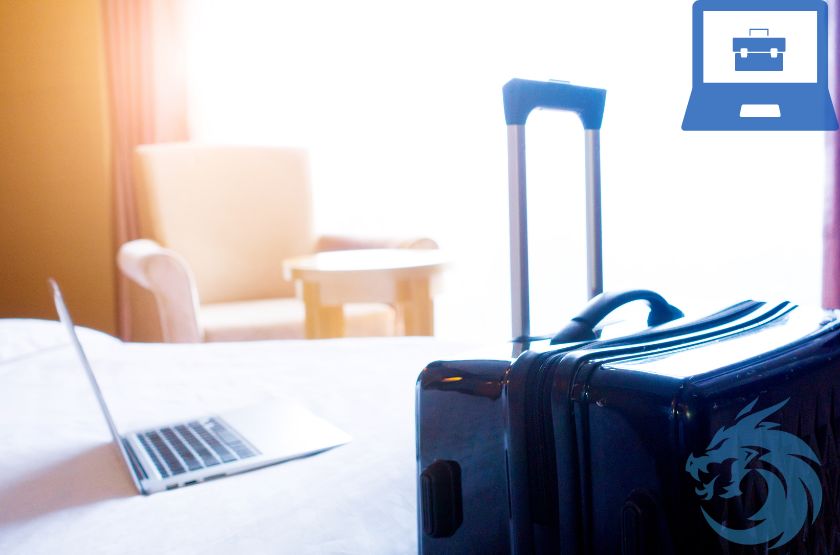Laptops have become indispensable for many travelers, whether you’re flying for business, studying abroad, or simply want access to personal files on the go. However, traveling with a laptop on airlines can present challenges such as navigating security regulations, ensuring its safety during the flight, and keeping it accessible throughout your journey. In this guide, we will walk you through everything you need to know about how to travel with a laptop in airlines, covering safety, convenience, and important airline regulations.
Understanding Airline Regulations for Laptops
When traveling with a laptop, it’s crucial to be familiar with airline regulations to avoid any surprises at the airport. Both TSA and global airport security guidelines allow laptops in carry-on baggage, but laptops must be removed from bags during security checks and screened separately. In contrast, while checked baggage may contain laptops, it’s generally not recommended due to potential damage risks from handling.
Lithium-ion Batteries
Airlines impose restrictions on lithium-ion batteries due to safety concerns. You are typically allowed to carry spare batteries in your carry-on, but you should check with your specific airline for limits on battery wattage.
Carry-On vs. Checked Baggage
Carrying your laptop in your carry-on bag ensures easier access and minimizes the risk of damage, while checked baggage may expose the device to rough handling and extreme temperatures.
Best Practices for Packing Your Laptop

Properly packing your laptop can help prevent damage and make it easier to access during security checks. Start by using a laptop sleeve or case with adequate padding to shield it from impacts. For maximum protection, consider using Hanke Luggage, which offers durable and reliable options for travelers.
Carry-On vs. Checked Luggage
When deciding between carry-on and checked luggage, prioritize your carry-on bag for your laptop. This not only reduces the risk of damage but also ensures your device remains under your control throughout the journey.
Accessories
Make sure to pack essential accessories like chargers, external hard drives, and adapters in your carry-on bag. Organize them in separate compartments to avoid entanglement and damage.
Security Screening and Laptops
Going through airport security with a laptop requires careful preparation. The TSA and most international airport security agencies will ask you to remove your laptop from your bag for screening. Ensure that your laptop is easy to access by placing it in a dedicated laptop compartment or sleeve.
Quick Tips for Security:
- Place your laptop in a pocket or compartment that can be easily opened.
- Keep your laptop ready for quick removal to avoid holding up the line.
- Be mindful of different regions’ security requirements, as the U.S., EU, and Asia may have varying policies regarding electronics.
In-Flight Considerations for Laptop Use

Using your laptop on a plane is generally allowed, though there are restrictions during takeoff and landing. The cabin crew may ask you to stow your laptop in the seat pocket or under your seat until the plane reaches cruising altitude.
Safety and Accessibility
Keep your laptop secure in the seat pocket or a backpack that can be stowed under the seat in front of you. Avoid placing it in overhead bins where it could get damaged from shifting luggage.
Power Sources
Many airlines offer power outlets for laptops in business and economy classes. If this option is available, make sure to bring your power cord, or use a power bank (if permitted) to keep your laptop charged during the flight.
Preventing Laptop Damage During Travel
Traveling can expose your laptop to several potential risks, including turbulence, baggage mishandling, and temperature changes in the cargo hold.
Protective Cases
Invest in a hard-shell laptop case or padded backpack to minimize the risk of damage from bumps and drops. Brands like Hanke Luggage offer excellent protection and durability, making them a solid choice for frequent travelers.
Handling Spills and Bumps
While in-flight, avoid placing your laptop on your tray table where it could be knocked over or spilled on. Keep it secured in your carry-on bag or seat pocket when not in use.
International Travel with Laptops
International travel introduces additional complexities when flying with a laptop, especially in terms of customs checks and data security.
Customs and Data Security
Some countries may require laptops to be screened more thoroughly during customs checks. Additionally, make sure your laptop’s data is secure by using encryption or backing up sensitive information before traveling.
Charging Adapters and Power
When flying internationally, bring the appropriate power adapters for your destination. Different countries have different plug types and voltage standards, so plan ahead to avoid being caught without power.
Ensuring Laptop Battery Life During Travel
Long flights can drain your laptop’s battery quickly, especially if you’re working or watching movies. There are several ways to extend battery life during your trip.
Conserving Battery
Adjust your laptop’s power settings to optimize battery usage, such as dimming the screen or enabling battery-saver mode. Close unnecessary apps and tabs to reduce power consumption.
Extra Battery or Power Bank
Bring an extra battery or portable power bank to extend your laptop’s use time. However, be aware of airline restrictions on lithium-ion batteries.
Conclusion
Traveling with a laptop requires careful planning, from understanding airline regulations to ensuring your device stays safe and accessible during the journey. By following these guidelines on how to travel with a laptop in airlines, you can minimize risks and make your trip more convenient. Always stay updated on the latest airline rules, and remember to protect your laptop from damage and battery drain while in-flight. Have any tips or experiences from traveling with a laptop? Share them in the comments below!
